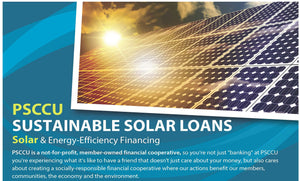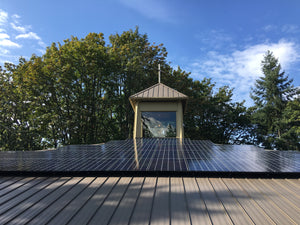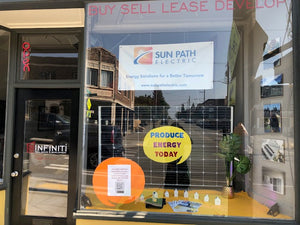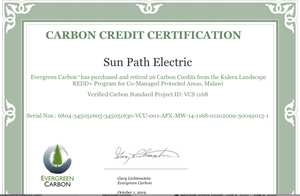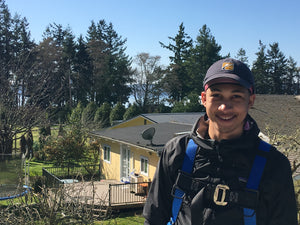
Sustainable Solar Loans with Puget Sound Cooperative Credit Union
Sun Path Electric is pleased to announce that through our partnership with Washington’s green credit union Puget Sound Cooperative Credit Union, we are able to offer low-cost solar financing with 0% interest and no payments for 90 days.
With a SustainableSolar loan and a Sun Path solar installation, you can reduce your carbon footprint and reduce your utility bills year round. By participating in this program, you can get help with your solar financing needs as well as any other energy efficiency projects, with loans up to $70,000*.
PSCCU’s solar program has helped over 7100 homeowners become solar citizens, created living wage jobs and generated 17000 Megawatts of electricity over their project’s lifetimes- in addition to sequestering the same amount of carbon as 13843 acres of forest per year!
So what can you expect from a Sustainable Solar Loan with PSCCU?
- 90 days with 0% interest and no payments*
- Fixed rates ranging from 3% - 9.84% APR** for the life of the loan
- No down payment required
- Terms up to 20 years**
- Fast approval times (same or next business day)
- Easy online application & signing process
- Loan can include EV charging station and Battery Back-up
- You can also include Energy Efficiency measures, such as a heat pump
- Up to 25% of the loan can go towards roof repair/replacement
- No prepayment penalties
- Principal payments can be made at any time – as often as you want
- Loan can be re-amortized once during the life of the loan at no cost to you
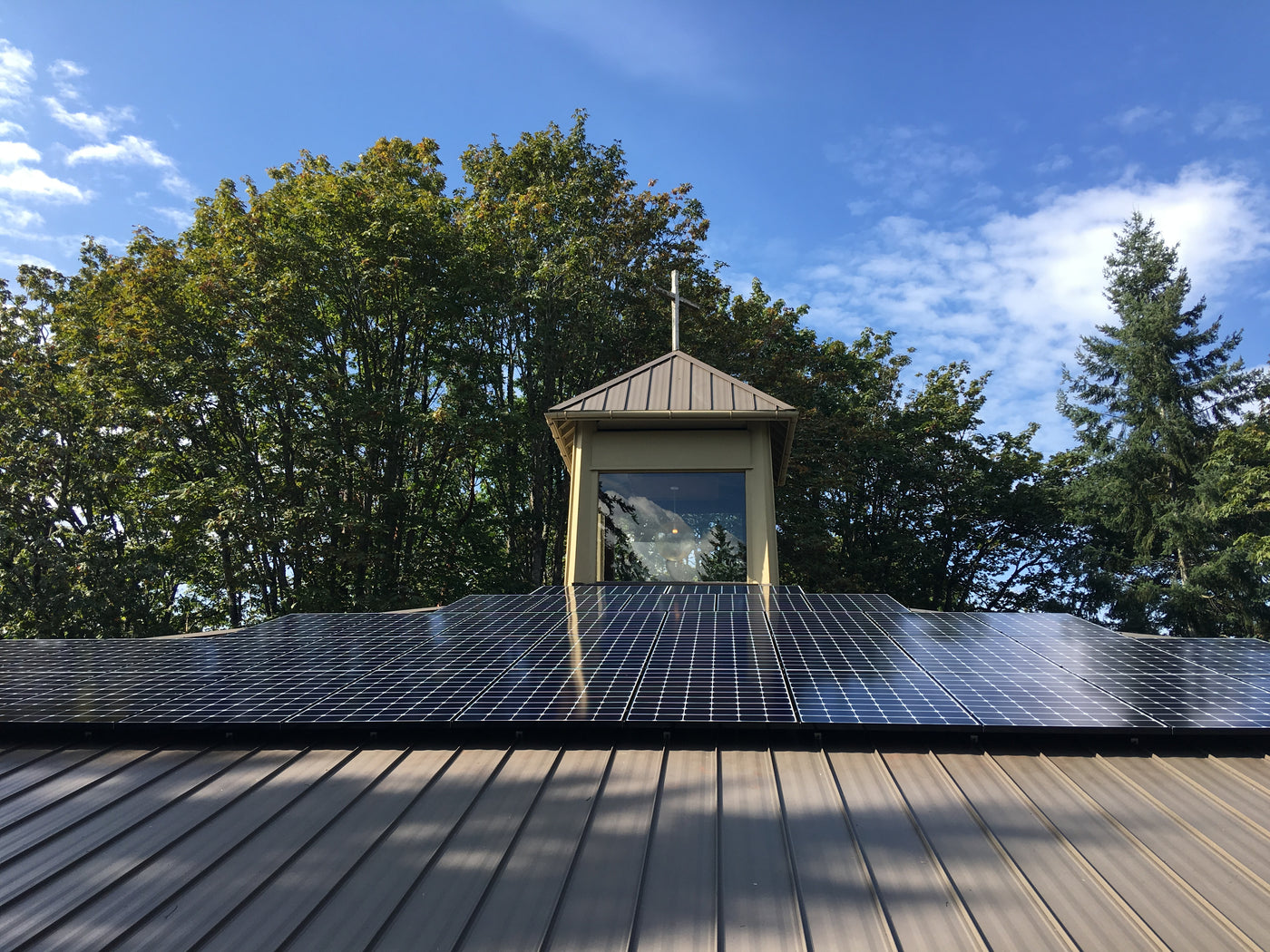
Mercer Island United Church of Christ Goes Solar. Learn How it Worked Out!
The following is an interview with Roberta Rominger, the Pastor at Mercer Island United Church of Christ, around going solar and their communities involvement on climate and sustainability issues.
What prompted the Mercer Island church going solar?
Climate has always been THE issue for me, but I wasn’t sure how to get it on the church’s agenda. But then we had a visit from Jim Antal, the environmental consultant from our United Church of Christ leadership. Do you remember the winter before last – the huge snows we had? Antal came to speak in Seattle the night after one of the big snowstorms. There weren’t very many people in the audience. I wasn’t sure we were going to get there! But I went with a few people from my congregation, and he totally convinced them, not only that climate change was immediate and urgent, but that the church could contribute to the response in a way nobody else could. I remember his exact words: people need a place where it is safe to know what they know and feel what they feel, and the church can be that. As soon as we got home, we started a book group to read Jim Antal’s book (Climate Church, Climate World). Then I preached several sermons about it. We were also hosting a community group, “Solarize Mercer Island.” It all came together and we decided we should go solar as a church. It was completely unanimous. The only discussion we had was whether to go for it right away or wait for the next generation of technology. The church voted to move on it right away.
How did going solar inspire you spiritually, particularly on the topic of climate change?
I feel inspired every time I see the panels gleaming on the roof! But I guess this is what I’d say. There are two things that make it possible to survive spiritually when you know what’s happening to our planet. One is community. I don’t think anybody lasts very long trying to do environmental work alone. We totally need each other. The other thing is getting out and doing something, preferably something big, that you know will make a difference. The decision about going solar energized our congregation and brought us all closer together. It was something big that we could do. We also connected with a couple of other churches that had installed solar ahead of us. We got people from their congregations to come and talk about how they made the decision and what the experience was like. I loved the feeling of reaching out for support – that’s a spiritual experience too.
What were the topics of the sermons?
The sermons were not lectures about climate change. I figured that everybody already had as much information as they could cope with. I wanted to deal with the feelings involved. This is important. I guess I’ve been upset about species extinctions and the ocean and melting glaciers and everything for as long as I can remember. But at some point, I realized that the feelings were bigger than just me. The grief I feel, and the outrage and frustration and most of all the love, I believe that I am feeling what God feels. That probably sounds pretentious, but it’s very real to me. When I get involved in climate work, I feel like it’s God working through me. But that isn’t what you asked! My sermons were called “Seizing Hope,” and I talked about our gut-level responses to what we know is coming and what spiritual resources our faith offers for giving us strength. There were six sermons, one on isolation, one on denial, then anger, fear, grief, and powerlessness. I really dug deep for messages that would connect us with the strength God is holding out to us. I remember Kristy Royce really helped me with the one on fear! It was more than just sermons – there are some amazing songs out there. One Sunday somebody sang “Bridge over troubled waters” – there wasn’t a dry eye!
What were the congregation's reactions to these sermons on climate change?
A couple of people couldn’t handle them. One person left the church – I think she’d been looking for a reason to move on. But other people came, including people from the community who heard about it through Solarize Mercer Island. There was a real buzz. I have to say that if I were doing it over again, six weeks was too long. But I’m glad we gave time to all those feelings. Since then, I think people have felt that this was a topic it was okay to talk about in the face of really gut-wrenching emotions. It still takes some courage to get past the denial we all retreat to.
What role do you think churches play on a community-wide level when it comes to climate change action?
Great question! There are so many things! Before I came as pastor, the church was already hosting annual e-cycling events, so we were already on the map. Then we started looking for the people on the Island who were doing climate work and getting to know them. It was me to start with. Our city has a sustainability officer, and he put out an invitation for anybody who was interested to meet at City Hall on a certain evening. I went, and I kept going. I met the key players, and when we started working on issues, I was in there. First there was a campaign to get the City Council to adopt sustainability as its framework for strategic planning. The came I-1631, the fantastic climate bill. Our church collected signatures to help get it on the ballot – that was 2018. A bunch of us have gone to the climate marches in Seattle. Before every march, we have sign-making at our church for the whole community, and people come. We hosted some sign-waving on Mercer Island this time last year – it feels like so long ago! I joined Fridays for Future too – it gave me a chance to take my sign to Seattle every Friday lunchtime. What else? We thought about having a street fair this year for the 50th anniversary of Earth Day. That didn’t happen because of Covid. But we were starting to work together with the climate action group in the local Rotary club. I feel really strongly about this, that we should look for chances to be in partnership with other organizations. We need each other. And it gives people a chance to see the church in a new light. Did I say that there was a story about us in the Mercer Island Reporter? We were on the front page – the congregation loved it. And we’ve got this reader board outside our church, right on a main street, and we put climate messages on there pretty regularly. And when our solar panels were finally up, we had a party and invited the community and got the mayor to speak. You just have to look for ways of being part of the action. People welcome it.
How much interest in going solar for their private homes did the church going solar generate?
I’m aware of three families who have gone solar. There’s another couple who would love to do it, but their house is completely in the shade. If there were an opportunity for community solar, they’d be first in line.
What advice would you have for other places of worship around going solar?
Go for it if you possibly can! It brings people together around a cause we’re all passionate about, and it does make a difference to the environment, however modest. Plus, every time people drive past the church, the panels shout what we believe in.
- Sun Path Electric
- Tags: Churches going solar Mercer Island Solar Seattle churches going solar Solar on Mercer Island
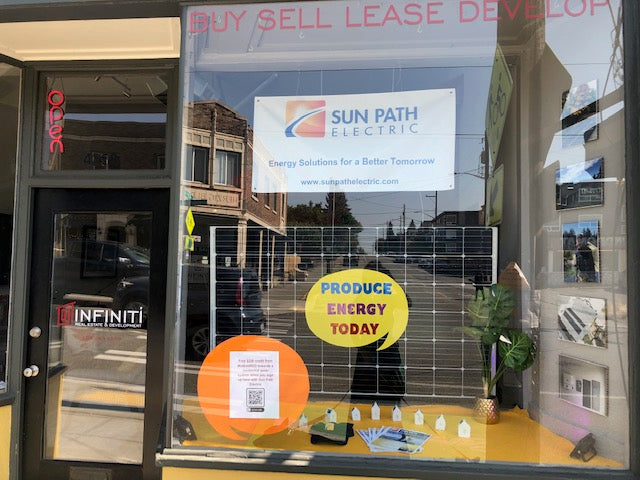
Seattle Solar Real Estate Agents: Infiniti Real Estate & Development
When the time comes to sell your solar home, it is important your real estate agent understands why solar increases your home's value. We encourage our clients to find an agent who can interpret and articulate the value solar brings. These agents, "speak solar," and they can translate the numerous benefits solar brings into tangible ROI when selling your home.
According to a recent Zillow article, "solar increases a home's value an average of 4.1% across the United States."
According the Department of Energy's Lawrence-Livermore Labs study,"Home buyers consistently have been willing to pay more for homes with host-owned PV systems - averaging $4 a watt - across all states, housing and PV markets."
This translates to a typical home value increase of about $15,000.
Sun Path is proud to support agents who understand and support solar. For this reason, we are honored giving a shout out to Infiniti Real Estate & Development in Fremont. These folks know their solar and they support Seattle solar installers.
Check out their solar window display!
Interested in going solar? Mention Infiniti and we will give you $250 off your system.
***
Infiniti Real Estate & Development is a full-service brokerage specializing in innovative housing solutions for the Greater Seattle area. We help people and businesses discover the best locations for home or office spaces. With an enduring commitment to the triple bottom line of people, planet, profit, we combine traditional commercial and residential brokerage services that deliver your dream home, office, retail, or live/work space. Infiniti RED’s Seattle real estate experts are committed to integrity, excellent customer service, and to providing clients with expert knowledge in a competitive market.
- Sun Path Electric
- Tags: Seattle solar Seattle Solar installer Seattle solar real estate agent Solar improves home Value
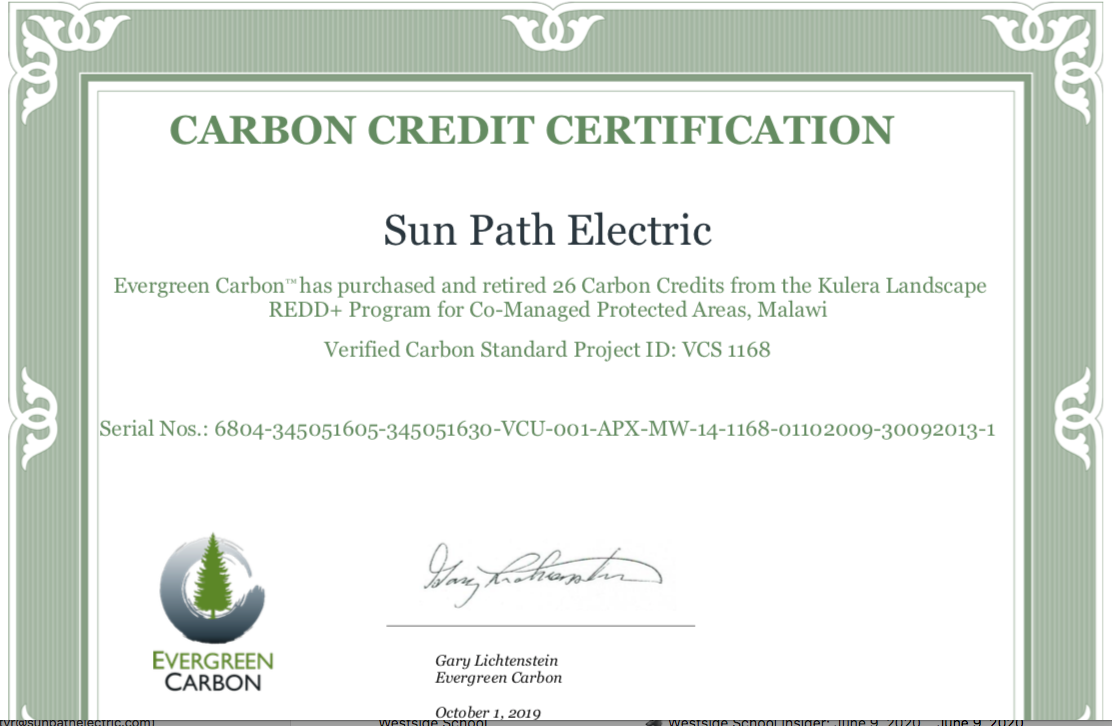
How to Make Sense of Carbon Offsets
It can be hard to know where to focus energy in our world today. It seems that we are collectively gaining understanding of challenges that have long-impacted so many – health, safety and social equity are on our minds on a daily basis. Climate change, and the fundamental, existential threat it poses, envelops all these issues. We are in a race against time to apply our collective ingenuity and resolve to combat this existential threat.
Thankfully, there are many working on solutions and right now, today, there are meaningful steps we can all take to reduce our individual carbon contribution to the climate change problem. Each individual, family, business and community has the ability to reduce our carbon footprint. One powerful tool is to “offset” the emissions produced in daily activities. Offsetting sets a price for carbon produced and that money can then be invested in projects that over the life of the project sequester, destroy or remove, avoid, carbon from atmosphere.
We, at Sun Path Electric, are committed to doing our part to help people add renewable energy generation to the mix. But, even this good work adds carbon to the atmosphere. So, to ensure we are living the solutions we work to create, we’ve developed a personalized carbon offset strategy. Sun Path founders, Kristy Royce and Briggs Neiman have been working with Seattle-based Evergreen Carbon to implement an offset plan for not only the business, but also their family.
Carbon What? How Do Offsets Work?
A carbon credit is generated from a specific project activity that destroys, sequesters or avoids greenhouse gas (GHG) emissions. One credit is equivalent to 1 Mt (metric tonne) of greenhouse gas emissions, as measured in carbon dioxide equivalency or CO2e. Credits are assigned a value, and are available for purchase. Carbon finance enables projects to exist that wouldn’t otherwise.
Projects that provide co-benefits for sustainable development, along with the carbon credits are the best. By offsetting unavoidable emissions, organizations are participants in sustainable development. Greenhouse gas management commitments can do inspiring work around the world, with purchase of carbon credits that meet strict, well regulated and high quality standards.
All offsets Evergreen Carbon provide are: Real, Additional, Verified, Registered, and Permanent.
Real – The project has to exist and the credits issues have to represent measurable reductions in greenhouse gases.
Additional – Projects have to be beyond business as usual for that industry. A project is demonstrated to be additional by showing that without carbon finance supporting the project, it wouldn’t happen. Projects have to meet legal, performance and financial standards.
Verified – An independent technically qualified, 3rd party verifies claims of generated carbon credits. Verification requires site visits, interviews and detailed documentation review. Only professionals, with the requisite technical and auditing skills are involved making sure the project credits are what they are claimed.
Registered – Carbon Credits can be used only once. GHG registries holds and tracks credits, while having no involvement in the sale of the credits. The registries provide a serial number and tracking that each credit is used only once and are unique.
Permanent – Carbon credits are only accounted for ex-post, they have to have already been generated. Credits cannot be reversed. Buffers and other safeguards are used to provide assurance of offset permanence.
A carbon credit is generated from a specific project activity that destroys, sequesters or avoids greenhouse gas (GHG) emissions. One credit is equivalent to 1 Mt (metric tonne) of greenhouse gas emissions, as measured in carbon dioxide equivalency or CO2e. Credits are assigned a value, and are available for purchase. Carbon finance enables projects to exist that wouldn’t otherwise.
Projects that provide co-benefits for sustainable development, along with the carbon credits are the best. By offsetting unavoidable emissions, organizations are participants in sustainable development. Greenhouse gas management commitments can do inspiring work around the world, with purchase of carbon credits that meet strict, well regulated and high quality standards.
Evergreen Carbon’s founder, Wolf Lichtenstein, has been working on multi-national carbon solutions for the last 15 years. He was drawn to this work after stretches as a software engineer and chemist, He is grateful for this path because it helped hone a systems-thinking world view that includes a detailed understanding of business, industry and corporate culture. Learn more about how Evergreen Carbon’s Offset Portfolio works.
Kristy, Briggs and their kids’ offset strategy factors in their daily lives, home and vacations, as well as the business - all energy, all rentals, electrical, all driving and 1 family air flight annually. Kristy and Briggs are passionate about healing our planet and they research choices diligently to ensure that their efforts are contributing to meaningful solutions. A key thing that they learned is that there is more carbon value in protecting trees than planting them. This knowledge helped them select the first project.
https://evergreencarbon.com/projects/featured-project-in-malawi-for-summer-2019/
“Part of the reason I go with Wolf is his offsets are the highest quality and very reasonable, as he just does not mark them up as much as some others I looked in to. He makes most of his living doing backend carbon accounting, so the offset business is really a sideline. He will buy the offsets in bulk at a net price and then sell them mostly to local Seattle businesses and friends. He is the real deal and is doing this to be part of the solution”
Wolf stresses that when selecting a carbon offset project, one should support projects that push the envelope and add to the international grid in a way that builds up local communities, as opposed to supporting established projects in the first world. “Don't buy solar credits in first world, instead consider the amplifying effect of supporting both ecological and social benefit in developing countries”. Renewable projects spur social equity, generate cleaner, greener jobs and build up the communities that need sustainable infrastructure. It is these projects that make markets stronger and build momentum for a global solution.
As valuable as offsets are, they are only part of an aggregate of growing, emerging and evolving solutions that weave together a number of “co-benefits”. Projects can be small and large scale, including such things as beekeeping and supporting Women-owned business along building with renewable energy projects, maintaining forests and planting trees. The UN has 20 Sustainable Development Goals, that illustrate the intersectionality of these co-benefits.
Additional Resources
Verra verifies the quality of projects around the world.
https://verra.org/
For individual flights, here are some good places to buy offsets:
https://nativeenergy.com/
https://standfortrees.org/en/
https://cotap.org/carbon-footprint-calculator/
A good flight calculator is:
https://www.myclimate.org/
By Rebecca Sayre
- Sun Path Electric
- Tags: Carbon neutral Carbon offsets Solar company is carbon neutral

Sun Path is Open For Business
We are ready to serve the Seattle Area
On March 22nd, Sun Path Electric decided for the safety of our employees, clients and community in general, to shut our operations. Although solar was considered essential, we felt it best to do our part to "flatten the curve" and lower the number of infected people in Washington state. Honestly, as important as grid-tied solar is, we did not see it as essential.
After two months sheltering in place, we are slowly re-opening and will be following all CDC guidelines on all job sites. The safety of our staff and clients is always our number one concern. All employees will be practicing social distancing both on and off the job site. We are returning to work slowing and with great care.
Here are a few details:
PPE
- Gloves: Crew members will wear gloves at all times while on site.
- Eye Protection: Crew members will wear eye protection at all times while on site.
- Face Masks: Crew members will weak face masks at all times while on site.
- Handwashing: All staff will follow CDC guidelines for handwashing and will have handwashing ability (outside of your home) on site.
- Cleaning and disinfecting work stations: All workstations will be cleaned and disinfected at the start and end of each day.
Solar Systems
Solar system installations mainly happen outside on your roof and mounting equipment on the side of the home. Our electricians will need to enter your home to access your electric panel, which is usually located in the garage or electric room. When entering home, all staff will adhere to CDC guidelines.
Remote Site Surveys
Our sales and design team specialists will provide remote preliminary consultation and solar quotes. This includes an overview phone meeting, emailed educational materials on going solar in Washington, a solar system designed through advanced mapping technology and information provided from our customers. After the initial consultation, upon customer approval, and in-person meeting and site evaluation is scheduled to make sure the home and roof are as indicated on satellite imagery. Our solar consultant will wear PPE and follow social distancing suggested by the CDC.
As Always, We Are Here For You!
Now, more than ever, small, socially-minded businesses, such as Sun Path Electric, need community support. Over the last two years, we have installed hundreds of solar systems, donated thousands of dollars to local climate groups, and provided hundreds of hours of community education on solar and climate change. Our consistent 5 star reviews, across all platforms, speak for themselves. We are here for you in good times and in less-than-good times. We continue to move solar and climate education forward with love, honesty and quality workmanship.
- Sun Path Electric
- Tags: solar open for business Solar systems Sun Path Electric open for business

From Climate Activist to Seattle Solar Installer
We are so excited to announce that 19 year old climate activist and innovator, Aji Piper, has joined the Sun Path Electric family as a Seattle Solar Apprentice. His climate advocacy began when he moved to Seattle just under a decade ago and became involved with a local arm of the international youth movement, Plant for the Planet and their Three point plan to reduce the impacts of climate change: Plant Trees, Leave Oil in the Ground and Fight for Social Justice.- Sun Path Electric
- Tags: Climate Activism to solar Seattle Solar Seattle Solar Installer Solar in Seattle
